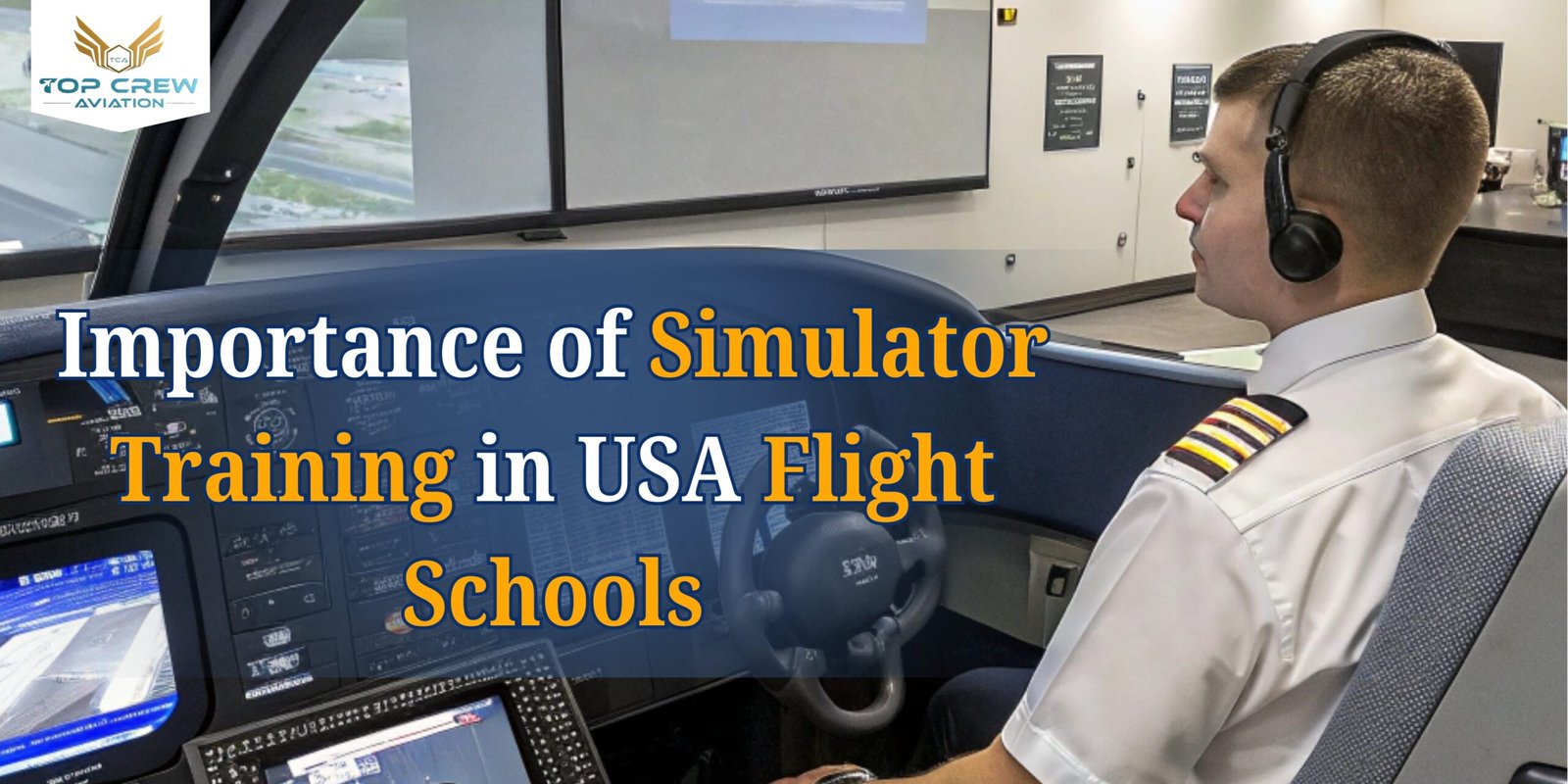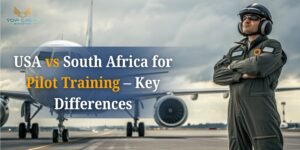Introduction to Simulator Training in USA Flight Schools
The aviation industry in the United States is known for its high safety standards, advanced technology, and world-class pilot training. One of the most important aspects of modern pilot education is simulator training in USA flight schools. This advanced learning method allows student pilots to gain real-world flying experience in a safe and controlled environment.
Through flight simulators, trainees can practice takeoffs, landings, navigation, and emergency procedures without leaving the ground. This not only improves safety but also reduces the overall pilot training cost in USA.
In today’s aviation world, simulator training is no longer an option—it’s a necessity. It ensures that future pilots are confident, skilled, and prepared for real flight situations. Let’s explore why simulator training in USA flight schools has become such an essential part of aviation education.
What Is Flight Simulator Training?
Flight simulator training is a method used by aviation schools in USA to teach flying skills using virtual flight environments. These simulators mimic the cockpit of real aircraft, including controls, instruments, and visuals of the outside world.
There are different types of flight simulators, from basic desktop simulators to advanced FAA-approved simulators that can replicate nearly every flight condition.
Through simulator sessions, students can practice handling various aircraft, weather conditions, and system failures—situations that are often too risky to perform in real flights. This type of training helps pilots understand flight dynamics, improve coordination, and master the decision-making skills needed in actual flying.
Why Simulator Training Is Essential for Pilot Training in USA
Simulator training plays a crucial role in pilot training in USA because it bridges the gap between theory and practice. In traditional flight training, students rely only on real aircraft, which limits how often they can practice due to weather, cost, or aircraft availability.
With simulators, students can fly anytime, repeat scenarios, and make mistakes safely—something impossible in real flying.
Moreover, simulator training importance is recognized by the Federal Aviation Administration (FAA). Many of its certified flight schools in USA must include simulator sessions as part of their programs. This makes it possible for pilots to gain required flight hours efficiently while building strong confidence before taking control of an actual aircraft.
Types of Flight Simulators Used in US Aviation Schools
Aviation schools in USA use a range of flight simulators depending on the level of training. Some common types include:
- Basic Aviation Training Devices (BATD): Used for fundamental flight concepts and navigation training.
- Advanced Aviation Training Devices (AATD): Provide more realistic flight experiences with detailed controls and visuals.
- Full Flight Simulators (FFS): High-end, FAA-approved simulators that exactly replicate aircraft performance, movement, and sounds.
Each type serves a specific purpose, allowing students to gradually progress from simple simulations to complex flight scenarios. The use of these simulators helps students gain valuable pilot experience training before they ever take off in a real plane.
Benefits of Simulator Training for Student Pilots
There are numerous simulator training benefits for aspiring pilots. Let’s look at some of the key advantages:
- Safety: Simulators allow students to practice emergency procedures safely.
- Cost-Effective: Simulator training cost in USA is lower than real flight hours, helping reduce overall flight school fees in USA.
- Repetition and Feedback: Students can repeat the same scenario multiple times to perfect skills.
- Weather Independence: Simulators work regardless of weather conditions, keeping training schedules on track.
- Confidence Building: Students gain hands-on control experience before flying real aircraft.
Because of these advantages, flight schools simulator training in USA programs are now considered a core part of pilot education rather than supplementary training.
How Flight Simulators Improve Pilot Decision-Making and Safety
A major advantage of simulator flight training is its role in improving pilot decision-making. Real flight situations often require quick thinking and calm reactions. Through simulation, pilots experience challenging conditions like engine failures, severe turbulence, or system errors—all in a risk-free environment.
By practicing these scenarios, students learn how to remain calm and make smart decisions under pressure.
Additionally, simulators record every movement, allowing instructors to review errors and provide feedback. This continuous improvement process helps enhance both confidence and situational awareness—two key qualities of a successful pilot.
Simulator Training Requirements Under FAA Regulations
The FAA simulator training requirements ensure that all flight schools in USA maintain a high standard of pilot education. According to FAA rules, certain simulator sessions are mandatory to earn specific licenses or ratings.
For example, FAA-approved simulators are required for instrument rating courses, commercial pilot training, and airline transport pilot certification.
The FAA sets strict standards for equipment, instructor qualifications, and training hours. These regulations ensure that every simulator training program offers real value and replicates genuine flight experiences. As a result, pilots trained in USA are respected worldwide for their skills and professionalism.
Cost of Simulator Training in USA Flight Schools
The simulator training cost in USA depends on the level of equipment and duration of training. Basic simulators cost less, while full flight simulators with motion platforms are more expensive.
However, compared to flying actual aircraft, simulator sessions are still much more affordable. Many top flight schools in USA include simulator sessions within their flight school fees in USA, offering complete packages that balance quality with affordability.
Overall, simulators help reduce the number of costly real flight hours required for certification, making pilot training more accessible for aspiring aviators.
Comparing Real Flight vs Simulator Flight Experience
Both real and simulated flight experiences are important in pilot training, but they serve different purposes.
Real flight offers the feeling of actual aircraft control, while simulator flight training allows repeated practice of complex or dangerous situations.
In simulators, pilots can pause, analyze, and restart scenarios—something impossible during a real flight. This makes simulators ideal for learning emergency responses, instrument flying, and cockpit resource management.
When combined, real flight and simulation create a complete learning experience that builds both technical and practical flying skills.
Top USA Flight Schools Offering Advanced Simulator Programs
Several top flight schools in USA are known for their advanced simulator training programs. Some of them include:
- Embry-Riddle Aeronautical University
- ATP Flight School
- Purdue University Aviation College
- University of North Dakota Aerospace
- CAE Global Academy USA
These schools use the latest FAA-approved simulators to ensure their students receive high-quality pilot training in USA. Their programs focus on combining theory, real flying, and simulator sessions for complete pilot development.
Career Advantages of Completing Simulator Training in USA
Completing simulator training in USA flight schools provides numerous career benefits. Employers look for pilots who can handle stress, make smart decisions, and adapt quickly to different flying conditions.
Pilots who undergo thorough simulator training develop these exact qualities.
Additionally, having simulator training certification from an FAA-approved school adds strong value to a pilot’s resume. It increases job opportunities in airlines, charter companies, and corporate aviation.
This makes simulator-based education an investment that directly supports a long-term aviation career.
Conclusion – The Future of Simulator-Based Pilot Training in USA
The future of flight simulator training in USA looks promising as technology continues to evolve. New-generation simulators now use virtual reality (VR), artificial intelligence (AI), and motion systems that replicate real-world flying conditions even more accurately.
As safety, efficiency, and cost become top priorities in aviation, simulator training in USA flight schools will continue to play a key role in shaping skilled, confident, and professional pilots. Whether you’re planning to start your pilot training in USA or looking to enhance your aviation career, enrolling in a school that offers advanced simulator programs is one of the smartest decisions you can make.
Suggestion Blog URL:-



